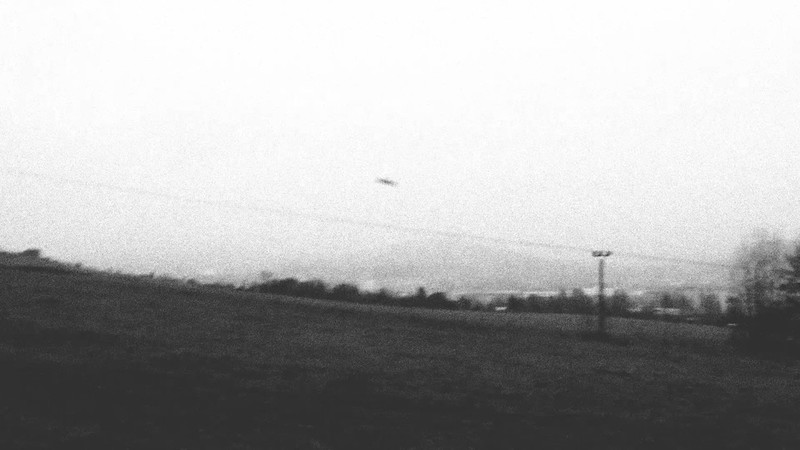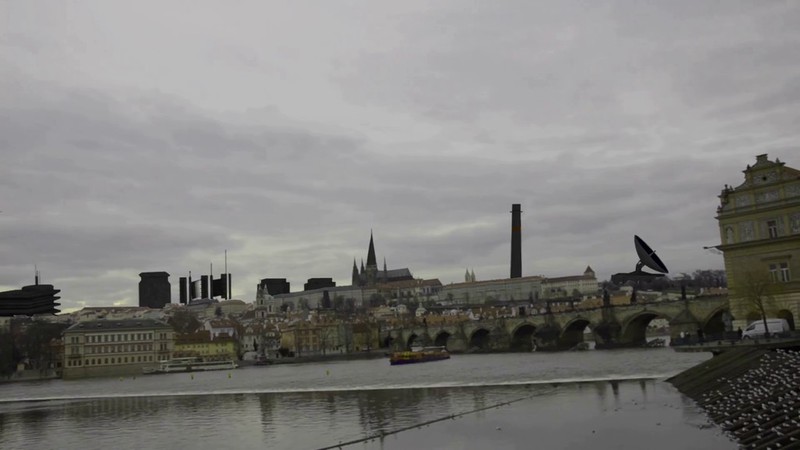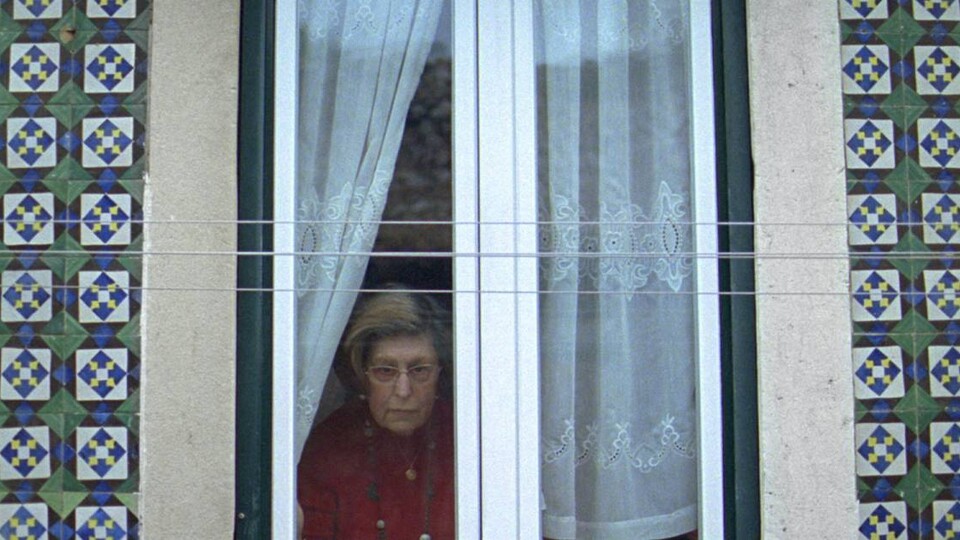Czech Documentary Alchemy
Experimental cinema is a bit like alchemy. The combination of techniques, aural and visual, shares a certain energy with the methods of pre-modern natural philosophers. It wasn’t just about making gold, after all. Experimental filmmakers seek affinities and antipathies between sounds and images, exploiting them inspire new ideas and craft new forms of cinematic expression.
And, like the alchemists before them, they are not restrained by the rigorous principles of modern science. To put it another way, the idea of experimentation doesn’t require a scientific method. Not discounting the tremendous amount of experimental cinema built on the physical properties of celluloid, many of today’s filmmakers understand that the artistic material need not necessarily be tangible. Much of this creativity was on display in the program of Czech experimental films of this year’s JIhlava International Documentary Film Festival.
The most direct of these transmutations is that of Hoax, a very short film by Jakub Korselt. Its subject is a disc, flying across an anonymous field. Its raw footage has much in common with the amateur video that one finds all over YouTube. Yet Korselt’s manipulation of the materia elevates beyond a simple documentary record of a new toy.
He rapidly edits between repeated shots of the object in flight, disorienting the viewer and complicating the sense of space. His choice of music, a single thumping electronic track, further dislocates the film from any real-life location. Hoax takes on the air of a gallery installation, or the background images for a rave. The subtle variations in focus and grain, complemented by the black and white cinematography, lightly bewilder the audience.
Interestingly, in Korselt’s pursuit of the imagery of UFOs, he undermines the crispness of contemporary amateur cinema. Rather than use technology to make his film look more convincingly alien, Korselt uses the aesthetic cues of the old photographs beloved by conspiracy theorists to craft an obvious hoax. His interest is in the appeal of the idea, rather than its authenticity.

Hoax, Jakub Korselt, 2016
A similar subversion of material is on display in Kryštof Strejc’s Dialogue, a shadowy transmutation of Luchino Visconti’s The Stranger. Streyc uses a single excerpt, a conversation between Arthur Meursault (Marcello Mastroianni) and a priest (Bruno Cremer). Meursault, awaiting execution, argues that the question of God’s existence is irrelevant and that it’s best to live as if there is no afterlife. “Your heart is blind,” responds the priest.
Streyc alters this material by nearly blinding his audience. He presents the scene from through cut glass, obscuring the faces of the actors. They become indistinguishable. This crucial Existentialist text has migrated from the page, through the form and voice of Mastroianni and Cremer, into a new space between these abstract shapes.
As such, Streyc’s film isn’t really about the ideas presented by Albert Camus. It is about the conversation as an object, itself perhaps as irrelevant as its theological questions. Much as the original novel took a sharp instrument to centuries of religious dialogue, so this film fractures its discourse in turn.
A much more extravagant visual intervention comes about in WhereWhoYouMeAre, in which filmmaker Jakub Krejčí unleashes a videogame aesthetic into an urban landscape. Actress Natálie Loukotová wanders Prague alone, narration following her as she walks. “I will try to reconstruct it out of sleep,” she says, implying that the 3D animations which emerge are the manifestations of her own dream.
An enormous antenna lurks above the skyline. Buildings are replaced by animated approximations with fewer architectural features. The real world is gradually stripped away, accelerating toward striking colors and spatial confusion. Eventually, the voiceover becomes panicked. “I will not remember anything,” she says. This is followed by profane outbursts and a shrieking collapse.
The suggestion, perhaps, is that there is danger in the digital world. Yet this is not a technophobic film and there is little evidence of any Luddite, anti-Internet paranoia. The menace doesn’t emerge from the video-game aesthetic, but rather from the vague dream that sets everything in motion. Krejčí’s 3D animation is a tool, through which the pursuit of fantasy is able to reach the depths of madness.
The protagonist of WhereWhoYouMeAre is only a cypher anyway, a stand-in for larger perceptual issues. Character is a means to an end, an argument made by The Colonel’s Photograph with the following text: “Characters no longer matter. Movement is what matters.” Filmmaker Martina Holá foregrounds this quote, excerpted from an interview with Eugene Ionesco, to recontextualize a variety of images.

WhereWhoYouMeAre, Jakub Krejčí, 2016
The words themselves actually become props on the screen, arranged by Holá to create a physical interaction between the playwright’s choice of vocabulary. Everything becomes a prop in this playful film, from the reflection of a forest on a lake to the whirlwind rotation of a city map from above.
The most interesting case is that of a drawing of a baseball bat. It spins in response to another of Ionesco’s phrases, “Movement inhabits the characters.” Its image implies the presence of a human being that grasps the next, waiting to swing. This particular bat begins to fulfill that destiny, but then continues to spin. Its path thwarts our expectation, removing the imaginary baseball player from the frame. Movement has made it an abstraction.
This same technique can be applied to real, human figures just as well as landscape photography or simple animation. Zbyněk Baladrán’s To Be Framed conducts an act of transmutation on a group of real children, who play on the grounds of a former German military base. His black and white images evoke the directness of documentary verite, but are undermined by the competing sonic influences of music and voice over.
An electronic drone ebbs and flows, echoing the historical angst of the landscape. The narration, however, is much more detached. “How should we organize our lives?” it begins, and then proceeds to explain the necessity of translation. Presumably this is because the children, who do not speak, require the voice and language of an adult. Their project is to “emerge from violence and turn it against itself,” an interpretation of the land on which they walk.
“Now you’re confused,” says the voice. The tensions between the spoken and unspoken, the child and the adult, and the present and the past remain unresolved. The translators, who include the filmmaker, “have picked up a camera and are attempting something.” The goal is simply to learn, in a general way, from the history of violence.
To suggest that there is a single resolution to be reach after this film is to misunderstand its experimental methodology. Much like the work of the alchemists, untouched by the Scientific Revolution and its project of universal organization, To be Framed has a freer experimental structure. The same is true of all of these films, which create meaning and inspiration through elastic tension and open-ended metaphors. Between animation and documentary, adaptation and re-use, language and image exist a theoretical landscape into which all of these filmmakers have stepped.



